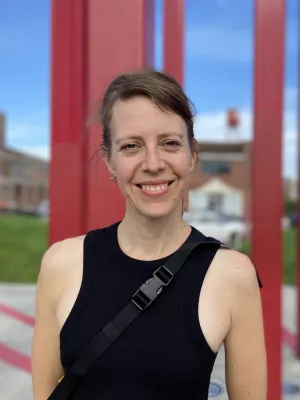
Melissa García
Associate senior lecturer

Grassroots mobilization for a just, green urban future: Building community infrastructure against green gentrification and displacement
Author
Summary, in English
Municipal climate resiliency and re-naturing plans are promoting greening and green (re)development, such as the inclusion of new parks, greenways, or rehabilitated shorelines, frequently as a-political, win-win solutions for all residents. Greenwashing and (re)development of green amenities in vulnerable neighborhoods—those often most in need of support toward resilience and adaptation—expose residents to the impacts of green gentrification, such as the pricing-out and physical displacement from housing, socio-cultural displacement from public space, and associated personal and community traumas. This paper explores an under-researched avenue in the green gentrification literature: How do grassroots community activists organize to address housing and greening simultaneously and how do they operate to achieve justice in greening neighborhoods? We examined the strategies and tools used by community groups in 10 cities in the United States facing green gentrification. We find that justice-driven strategies and tools are supported by the formation of multi-sectoral coalitions which strengthen what we define as “community infrastructures”—social, economic, and political capacities—against exclusive green-washing. We argue that each of the three capacities must be built amongst residents in order to fortify the material and immaterial components of community infrastructure.
Publishing year
2023-04-05
Language
English
Pages
1-34
Publication/Series
Journal of Urban Affairs
Links
Document type
Journal article
Publisher
Wiley-Blackwell
Topic
- Human Geography
Keywords
- community activism
- green gentrification
- greenspace
- housing justice
- environmental justice
Status
Epub
ISBN/ISSN/Other
- ISSN: 0735-2166